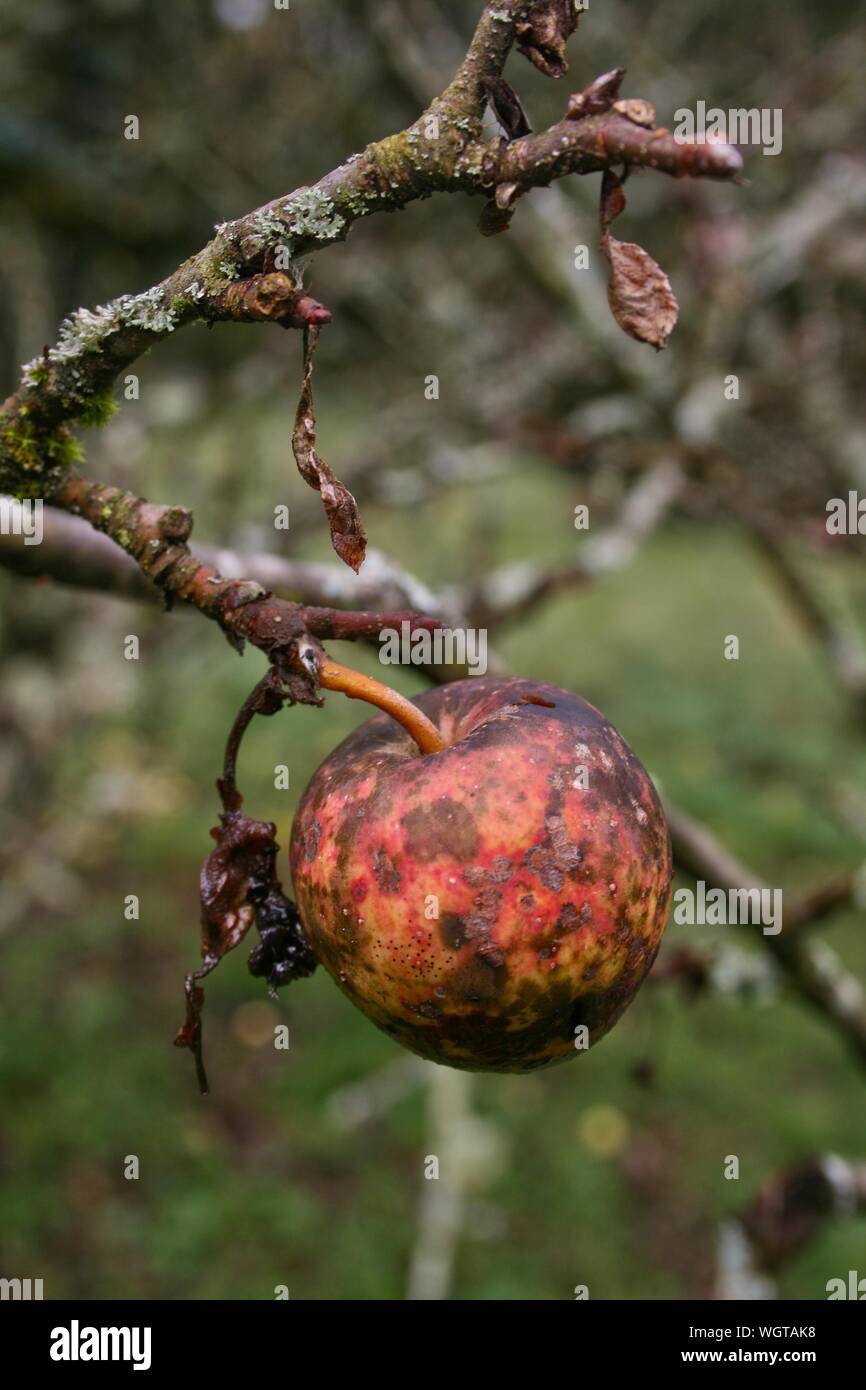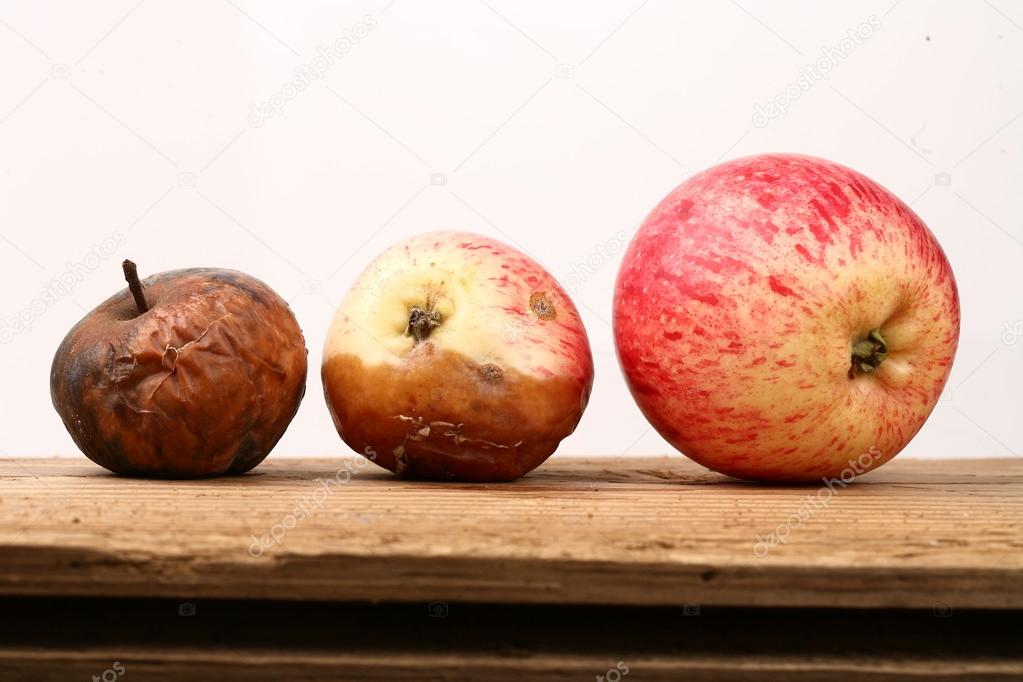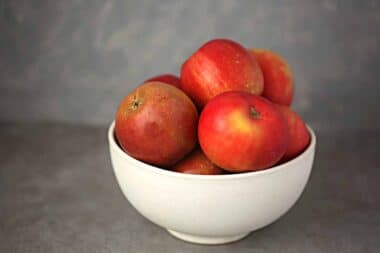Factors Affecting Apple Spoilage: What You Need to Know
Apples are one of the most widely consumed fruits worldwide, but their shelf life can be significantly impacted by various factors. Understanding these factors is crucial to extending the freshness of apples and preventing spoilage. Temperature, humidity, handling, and storage conditions are some of the key elements that influence the rate at which apples rot.
Temperature plays a significant role in apple spoilage. Apples stored at room temperature (around 70°F to 75°F) tend to spoil faster than those stored in cooler temperatures (around 32°F to 40°F). This is because higher temperatures accelerate the breakdown of cellular structures, leading to a faster spoilage rate. Humidity also affects apple spoilage, as high humidity can lead to moisture accumulation, creating an ideal environment for mold and bacteria growth.
Handling and storage conditions are also critical factors in determining the shelf life of apples. Apples that are handled roughly or dropped can develop bruises, which provide an entry point for bacteria and mold. Similarly, apples stored in poorly ventilated areas or in close proximity to strong-smelling foods can absorb odors and moisture, leading to spoilage.
When considering the question of how long does it take for apples to rot, it’s essential to take these factors into account. Generally, apples can last anywhere from a few days to several weeks when stored properly. However, if exposed to adverse conditions, apples can spoil rapidly, sometimes within a matter of days. By understanding the factors that affect apple spoilage, you can take steps to extend the shelf life of your apples and enjoy them for a longer period.
For instance, storing apples in a cool, dry place, away from direct sunlight and heat sources, can help slow down the spoilage process. Using breathable containers or bags can also help maintain optimal humidity levels and prevent moisture buildup. By taking these simple steps, you can enjoy your apples for a longer period and reduce food waste.
The Science Behind Apple Rot: A Closer Look
Apple rot is a complex process that involves the breakdown of cellular structures, enzymatic reactions, and microbial growth. Understanding the science behind apple rot can help you better appreciate the factors that influence the shelf life of apples. At the molecular level, apples are composed of cells that contain enzymes, proteins, and other biomolecules. When an apple is injured or exposed to adverse conditions, these cellular structures begin to break down, releasing enzymes that catalyze the degradation of cell walls and membranes.
One of the key enzymes involved in apple rot is polyphenol oxidase (PPO), which catalyzes the oxidation of phenolic compounds, leading to the formation of brown pigments. This enzymatic reaction is responsible for the characteristic browning of apples that occurs when they are cut or bruised. In addition to enzymatic reactions, microbial growth also plays a significant role in apple rot. Bacteria, mold, and yeast can all contribute to the spoilage of apples, particularly when they are stored in warm, humid environments.
The process of apple rot can be divided into several stages, each characterized by distinct changes in the apple’s texture, color, and aroma. Initially, apples may develop a slight softening of the skin, followed by a gradual loss of firmness and a change in color from green to yellow or red. As the rot progresses, the apple may develop a sour or unpleasant odor, and the flesh may become mealy or mushy. In extreme cases, the apple may become completely rotten, with a soft, slimy texture and a strong, unpleasant smell.
When considering the question of how long does it take for apples to rot, it’s essential to take into account the various factors that influence the rate of spoilage, including temperature, humidity, handling, and storage conditions. By understanding the science behind apple rot, you can better appreciate the importance of proper storage and handling practices in extending the shelf life of apples.
For example, storing apples in a cool, dry place can help slow down the spoilage process by reducing the activity of enzymes and microorganisms. Similarly, handling apples gently and avoiding bruising or injury can help prevent the activation of enzymes that contribute to rot. By taking these simple steps, you can help extend the shelf life of your apples and enjoy them for a longer period.
How to Store Apples to Extend Their Shelf Life
Proper storage is essential to extending the shelf life of apples. When stored correctly, apples can last for several weeks to several months, depending on the variety and storage conditions. Here are some tips and advice on how to store apples to prolong their freshness:
First, choose a cool, dry place to store your apples. The ideal storage temperature for apples is between 32°F and 40°F (0°C and 4°C). Avoid storing apples in direct sunlight, near heat sources, or in humid environments. A basement or root cellar is an ideal place to store apples, as it provides a consistent temperature and humidity level.
Next, select the right container for storing apples. A breathable container, such as a paper bag or a mesh bag, is best for storing apples. Avoid using plastic bags or airtight containers, as they can trap moisture and cause the apples to rot faster. You can also store apples in a wooden crate or a cardboard box, as long as it is well-ventilated.
When storing apples, it’s essential to handle them gently to avoid bruising or injury. Bruised apples can rot faster, so it’s best to separate them from the rest of the apples. You can also store apples in a single layer, rather than stacking them, to prevent bruising and moisture accumulation.
In addition to proper storage, you can also use specialized products to extend the shelf life of apples. Ethylene gas absorbers, for example, can absorb the ethylene gas produced by apples, which can help slow down the ripening process. Apple keepers, which are specialized containers designed specifically for storing apples, can also help maintain optimal storage conditions.
By following these tips and advice, you can help extend the shelf life of your apples and enjoy them for a longer period. Remember, the key to extending the shelf life of apples is to provide optimal storage conditions, handle them gently, and use specialized products when necessary. With proper care and storage, you can enjoy your apples for several weeks to several months.
When considering the question of how long does it take for apples to rot, it’s essential to take into account the various factors that influence the rate of spoilage, including storage conditions, handling practices, and variety. By understanding these factors and taking steps to extend the shelf life of apples, you can help reduce food waste and enjoy your apples for a longer period.
Recognizing the Signs of Apple Spoilage: What to Look Out For
Apple spoilage can be a gradual process, and it’s essential to recognize the signs of spoilage to ensure you use up your apples before they go bad. Here are some visible signs of apple spoilage to look out for:
Color changes: Apples that are going bad may develop a brown or yellowish discoloration, especially around the stem or blossom end. This is due to the breakdown of chlorophyll and the production of ethylene gas.
Texture changes: Spoiling apples may become soft, mushy, or mealy. This is due to the breakdown of cell walls and the loss of moisture.
Smell changes: Apples that are going bad may develop a sour or unpleasant odor. This is due to the production of volatile compounds, such as acetic acid and ethanol.
Slime or mold: Check for any visible signs of slime or mold on the surface of the apple. This is a clear indication that the apple has gone bad.
Shrinkage: Apples that are losing moisture may shrink or become smaller in size.
When checking for spoilage, it’s essential to inspect the apple carefully, looking for any visible signs of decay. If you notice any of these signs, it’s best to use up the apple immediately or discard it to prevent further spoilage.
By recognizing the signs of apple spoilage, you can help extend the shelf life of your apples and reduce food waste. Remember, the key to extending the shelf life of apples is to provide optimal storage conditions, handle them gently, and use them up before they go bad.
When considering the question of how long does it take for apples to rot, it’s essential to take into account the various factors that influence the rate of spoilage, including storage conditions, handling practices, and variety. By understanding these factors and recognizing the signs of spoilage, you can help extend the shelf life of your apples and enjoy them for a longer period.
The Impact of Variety on Apple Shelf Life: Which Apples Last Longer?
Did you know that different apple varieties can affect their shelf life? Some apples are bred to last longer than others, while some are more prone to spoilage. Understanding the impact of variety on apple shelf life can help you choose the right apples for your needs and extend their freshness.
Generally, apple varieties can be divided into three categories: early-season, mid-season, and late-season. Early-season apples, such as McIntosh and Cortland, tend to have a shorter shelf life due to their higher water content and softer texture. Mid-season apples, such as Empire and Fuji, have a moderate shelf life, while late-season apples, such as Granny Smith and Golden Delicious, tend to last longer due to their lower water content and firmer texture.
Some apple varieties are specifically bred for their long shelf life, such as the Honeycrisp and Ambrosia. These apples have a unique combination of characteristics, including a higher acidity level and a firmer texture, that help them last longer. Other varieties, such as the Red Delicious and Gala, are more prone to spoilage due to their higher water content and softer texture.
When choosing apples, consider the variety and its expected shelf life. If you want apples that will last longer, choose varieties like Honeycrisp or Ambrosia. If you prefer apples that are sweeter and softer, choose varieties like McIntosh or Cortland. By understanding the impact of variety on apple shelf life, you can make informed choices and enjoy your apples for a longer period.
When considering the question of how long does it take for apples to rot, it’s essential to take into account the variety of apple. Different varieties have different shelf lives, and understanding these differences can help you extend the freshness of your apples. By choosing the right variety and storing them properly, you can enjoy your apples for several weeks to several months.
How to Use Up Apples Before They Go Bad: Creative Ideas
Apples are a versatile fruit that can be used in a variety of ways, from snacking and baking to cooking and preserving. If you have apples that are approaching their expiration date, don’t worry There are plenty of creative ways to use them up before they go bad.
One of the simplest ways to use up apples is to make a delicious apple pie or crisp. These classic desserts are perfect for using up multiple apples at once, and they’re sure to be a hit with family and friends. You can also use apples to make a variety of savory dishes, such as apple and onion chutney or apple and sausage stuffing.
If you’re looking for a healthier option, consider making a batch of apple and berry smoothies or apple and carrot juice. These refreshing drinks are perfect for a quick breakfast or snack, and they’re packed with nutrients and antioxidants.
Apples can also be preserved through canning, freezing, or dehydrating. These methods allow you to enjoy your apples year-round, even when they’re out of season. Simply slice or chop your apples, add any desired spices or sweeteners, and follow the instructions for your chosen preservation method.
Another creative way to use up apples is to make apple cider or apple vinegar. These tangy liquids are perfect for adding flavor to salads, marinades, and sauces. You can also use them as a natural remedy for digestive issues or as a hair and skin tonic.
When considering the question of how long does it take for apples to rot, it’s essential to remember that apples can be used in a variety of ways, even when they’re approaching their expiration date. By getting creative with your apples, you can reduce food waste and enjoy the many benefits of this delicious and nutritious fruit.
Common Mistakes That Can Cause Apples to Rot Faster
While apples can be a durable fruit, they can still be susceptible to spoilage if not handled and stored properly. Here are some common mistakes that can cause apples to rot faster:
Improper storage: Apples should be stored in a cool, dry place, away from direct sunlight and heat sources. Storing apples in a warm or humid environment can cause them to rot faster.
Poor handling: Apples can be easily bruised or damaged, which can cause them to rot faster. Handling apples gently and avoiding drops or bumps can help prevent spoilage.
Washing apples too frequently: Washing apples too frequently can cause them to rot faster. Apples should only be washed when necessary, and should be dried thoroughly after washing to prevent moisture from accumulating.
Storing apples with other fruits: Some fruits, such as bananas and pears, release ethylene gas as they ripen. Storing apples with these fruits can cause them to ripen and rot faster.
Not monitoring storage conditions: Apples should be stored in a consistent environment, with a temperature between 32°F and 40°F (0°C and 4°C) and humidity levels between 80% and 90%. Not monitoring storage conditions can cause apples to rot faster.
When considering the question of how long does it take for apples to rot, it’s essential to remember that apples can be affected by a variety of factors, including storage conditions, handling practices, and washing frequency. By avoiding common mistakes and taking steps to extend the shelf life of apples, you can enjoy your apples for a longer period.
Extending the Shelf Life of Apples: Tips and Tricks
In addition to proper storage and handling, there are several other tips and tricks that can help extend the shelf life of apples. Here are a few:
Ethylene gas absorbers: These products can absorb the ethylene gas produced by apples, which can help slow down the ripening process.
Apple keepers: These specialized containers are designed to maintain optimal storage conditions for apples, including temperature, humidity, and air circulation.
Refrigeration: Storing apples in the refrigerator can help slow down the ripening process. However, it’s essential to maintain a consistent refrigerator temperature and humidity level to prevent moisture accumulation.
Freezing: Freezing apples can help preserve them for longer periods. However, it’s essential to follow proper freezing procedures to prevent spoilage and maintain texture and flavor.
Dehydrating: Dehydrating apples can help remove moisture and prevent spoilage. This method is ideal for making dried apple snacks or adding dried apples to recipes.
When considering the question of how long does it take for apples to rot, it’s essential to remember that apples can be affected by a variety of factors, including storage conditions, handling practices, and washing frequency. By employing these tips and tricks, you can help extend the shelf life of your apples and enjoy them for a longer period.
By following these tips and tricks, you can help extend the shelf life of your apples and enjoy them for a longer period. Remember, the key to extending the shelf life of apples is to provide optimal storage conditions, handle them gently, and use them up before they go bad.







